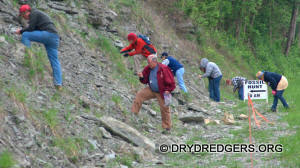

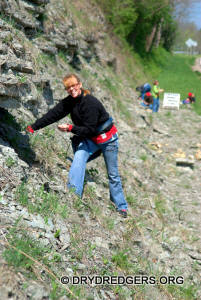

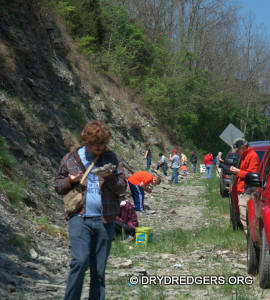
The Dry Dredgers April field trip returns us to a road cut in southern Ohio we call "Ponderosa Ranch" for the abundant Vinlandostrophia ponderosa and Rafinesquina ponderosa. Normally we find a lot of fossils from the Bellevue formation at the bottom of the road cut. This year we see that there has been some flooding that has washed more of Corryville Formation fossils down the hill, covering up the Bellevue fossils. This Corryville wash-down material is now weathered enough to find nice Corryville fossils.
Here are some photos of our group collecting fossils on the site. As you can see, the weather was pleasant and slightly cool in the morning.
Best Finds of the Day
By far, the best find of the day was this perfect Edrioastroid
Isorophus cincinnatiensis
(the Official Cincinnati City Fossil). Congratulations Barb! Barb's
goal for this field trip was to find an Edrioasteroid - and she did it. That's
what I call "Power Fossil Hunting".
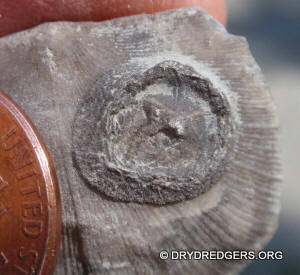
Trilobites
The next best finds were prone trilobites of the species
Flexicalymene meeki. In the photo below, you can see how
excited people get with they find a trilobite.


Here is the other prone Flexi found that day.
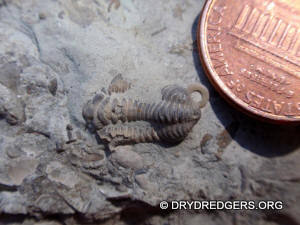
Most people on the trip found only parts of a trilobite. The
photo below is of the glabella of a Flexicalymene sp. The second photo is a few
thorax segments.
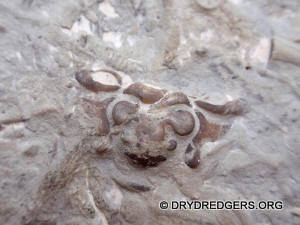
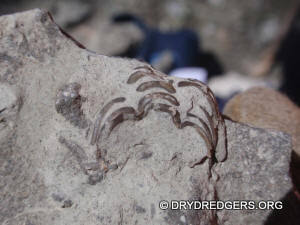
Isotelus maximus
Someone found this huge underside of trilobite pygium. It is
an Isotelus sp. In the second shot, we see a fragment that is probably also from
the underside of the pygidium.
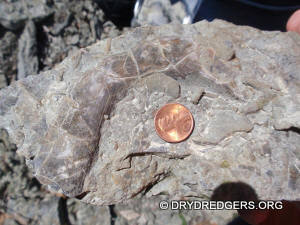

Brachiopods
Fewer of the large brachiopod
Vinlandostrophia ponderosa were
found this year because of the mud, clay and rock that had washed down the hill.
But a few were still found weathering from exposed Bellevue layers as the photo
below points out.

Here are a few of the Vinlandostrophia ponderosa
found that day.
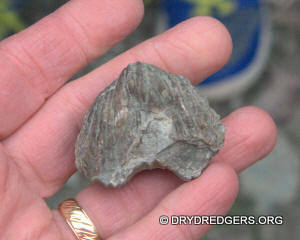
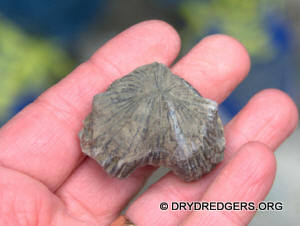

One thing to note about these large brachiopods. They have
calcite crystals inside. You don't need to break one open to find out. Most of
the V. ponderosas we found were already broken open revealing the crystals, much
like a geode.
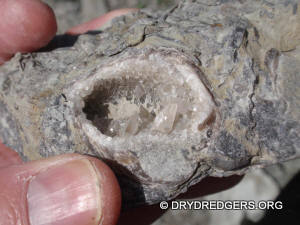

A smaller species that were even more abundant than
V. ponderosa was Vinlandostrophia laticosta
and V. cypha.

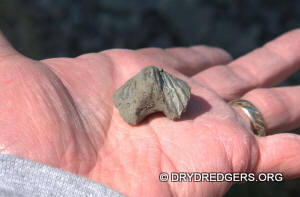

A satisfying number of the beautiful brachiopod
Hebertella occidentalis was also
found.


In addition to this site, there was another road cut down the road exposing more of the Bellevue layers and had abundant Rafinesquina sp.
Here's a different looking brachiopod. Found in what was
probably the Corryville rocks is what looks like an example of Plectorthis jamesi.

The tiniest of brachipods we were able to find with only a
hand lens was Zygospira modesta.

One member had the foresight to bring his new computer
microscope and used it to examine this Zygospira modesta
in more detail. How about that?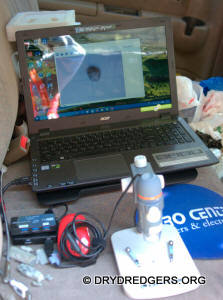
Bryozoans
Bryzoans are ubiquitous in the late Ordovician strata of the
Cincinnati Arch. Today's site was no exception. Here's an interesting byrozoan
colony. You would this is a horn coral that has been completely encrusted
with bryozoans. But it was found in the Bellevue or Corryville formations so
it's probably not a horn coral. 
Another interesting bryozoan shape was this ball. It
superficially resembles a dasyclad algae called Cyclocrinites.
It's actually entirely bryozoan as you can see on the bottom side (second
photo).
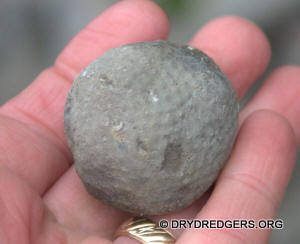
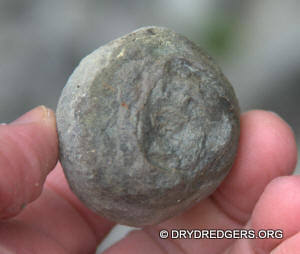
Other trepostome bryzoans were found in a wide variety of
shapes.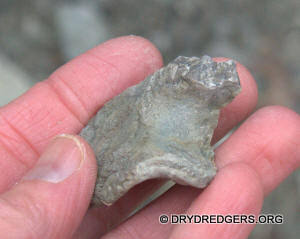

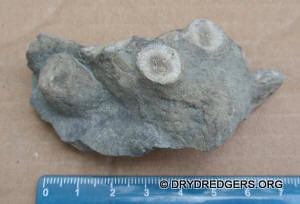
Even more common were ramose (branching) bryozoans.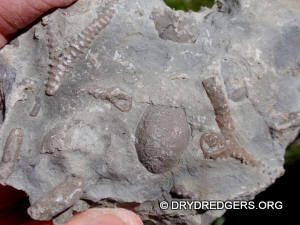
Here's an interesting kind of bryozoan. These are Cyclostomate
bryozoans. They form a network as the encrust brachiopod surfaces like this
Rafinesquina sp.
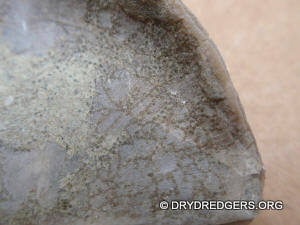
Nautiloid Cephalopods
It was not hard to find straight-shelled nautiloid
cephalopods. They were simply weathering out of everywhere. Can you spot the
cephalopods in the photo of weathered fossils below?
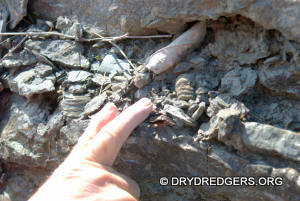
Some of the nautiloid cephalopods were in rock and many were
weathered free from matrix.
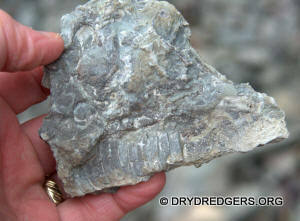

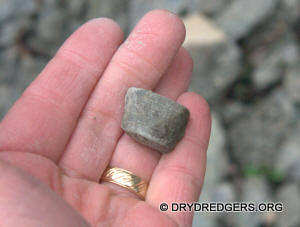

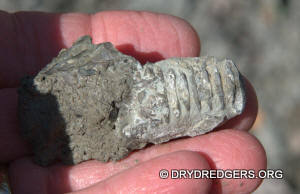
Crinoids
As far as I know, no one found a crinoid calyx. Only stems
like the one shown below were found.
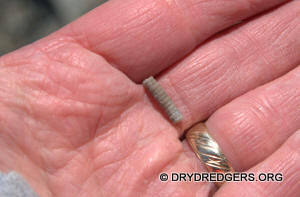
Gastropods
We were pleased to see a fair number of the snail Cyclonema sp..
This gastropod is one of the only Cincinnatian varieties that has external shell
features preserved.
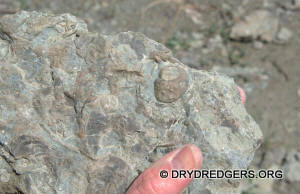

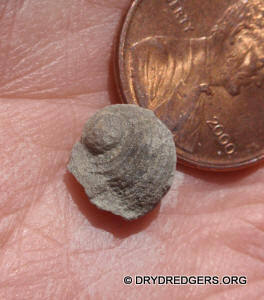
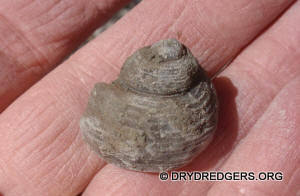
Bivalves
We also found clams that had shell details preserved on it.
This one is called Caritodens demissa.

Most clam fossils we founc were Internal molds resembling Ambonychia sp.



Here is a typical haul in the trunk of a car.

That's all for this field trip. Thanks for reading.
Now check out our tour of the road cuts along a Kentucky state route.
See photos of our previous trips to the Ponderosa Ranch.
Back to the Field Trip Index Page
Return to Dry Dredgers Home Page
The Dry Dredgers and individual contributors reserve the
rights to all information, images, and content presented here. Permission to
reproduce in any fashion, must be requested in writing to admin@drydredgers.org.
www.drydredgers.org is designed and maintained by Bill Heimbrock.